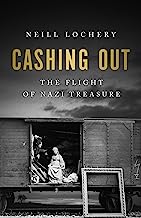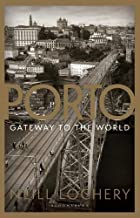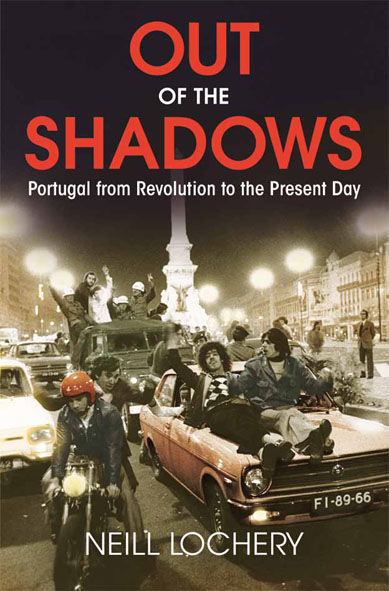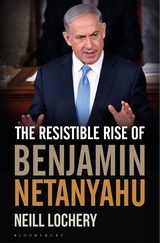Lisbon: War in the Shadows of the City of Light 1939-45
Whilst walking around Lisbon conducting the research for this book it soon became clear to me that the city centre had not physically changed much since World War II. The old black and white photographs from the period that I have studied of the banks in the financial part of the city, the main square with all its cafés, and the docks area closely resembled what I witnessed during my excursions across the city. Even when a terrible fire wiped out a large part of the Chiado central shopping district in 1988, the area was lovingly rebuilt to resemble its original glory.
The continued charm of the city is partly in this appearance of belonging to a bygone era, and in the quite amazing light that bathes the city on clear days in a warm glow. On such days, the light in the city during the twilight hours is truly spectacular. Lisbon remains a photographers dream, a beautiful film location. Despite all the shades of pastel lime plaster that give colour to the city’s tall buildings, and the deep blue tones of its skies during the summer months, the city remains at its most attractive when viewed in black and white.
I first discovered Lisbon in the middle of 1986, just over a decade since its peaceful Carnation Revolution of 25th April 1974. The revolution had brought about the end of the period of authoritarian rule in Portugal, and its replacement with a democratic state. The city’s walls and buildings were then covered in graffiti, which denounced the country’s old authoritarian leadership, and in particular, António de Oliveira Salazar who led the country for nearly forty years. Other slogans included statements of support for Portugal’s communists, hailing their role in the dramatic events of 1974.
On 1st January 1986, Portugal had joined the European Community, but in truth, back then, Lisbon still felt like an isolated European capital city located on the western edge of the continent. Any mention of the Salazar era usually caused a degree of uneasiness in the Portuguese. Salazar was only discussed in the context of anti-authoritarian books, or in the songs of the left-wing protest singers. I could not help but feel that he was being punished, as the scapegoat for all the countries ills. This all appeared to be rather simplistic, a reflection of the rather immature nature of Portuguese democracy at the time.
Some 25 years after my first visit, much has changed politically in Lisbon. Democracy appears to have taken root with mainstream centre left and centre right parties regularly vying for power. The injection of funds from the European Union has transformed the infrastructure of the old suburbs of the city. There is now a second bridge across the River Tagus, the longest bridge in Europe, spanning some 10.7 miles. The motorway system has been hugely expanded, including the building of impressive viaducts. The metro system likewise has been developed to reach nearly all the suburbs of the city (except oddly enough the international airport).
There are two impressive soccer stadiums in the city, which were built as part of Portugal’s hosting of the Euro 2004 soccer championships. Huge shopping malls have sprung up dominating the city’s skyline, all of them claiming to be the biggest or best at something. At weekends, the city’s docks area and Bairro Alto district host the youth of Europe who flock to the city for its cheap beer, late night closing, and famously liberal drugs laws. All in all, Lisbon in 2011 represents a more European city than a Portuguese one.
The real story of Lisbon is located, however, away from all this superficial development and change. The truth is that the city and its population still find it difficult to come to terms with its recent past. As a Portuguese businessman pointed out that the trouble with the city not having been destroyed in World War II is that all its infrastructure, houses, plumbing and sewage systems are at least over 100 years old, and are starting to collapse. The renovation of the city centre is a slow process, but is being undertaken with loving care. The results of the restoration are quite remarkable in helping show off the past glories of the city. The only downside to this is that soon after these renovated buildings are unveiled, the so-called modern graffiti artists do their worst, destroying much of the beauty of the buildings. The slogans today are no longer about Salazar, or his regime, rather contain an anti-American sentiment, support for strike action, or are simply too rude to translate.
I have discovered during my research for the book that the single biggest problem the city, and indeed the country faces, remains in education. Literacy rates, despite improvements since World War II, are not acceptable for a member state of the European Union. A Portuguese newspaper article reported that while the Portuguese are statistically good in terms of the numbers of books they write, the percentage of the population who actually read these books is similar to that of Albania. Perhaps because of this lack of education, many Portuguese remain ignorant about its role in World War II and the moral dilemma Salazar faced in the resulting post-war year.
In Portugal, there remains a degree of difficulty in dealing with the Jews, which, in part, stems from the World War II. It would be too simple, and rather unfair, to suggest that this manifests itself as anti-Semitism, or indeed anti-Jewish violence. It does not. There is a sense of awkwardness, however, even among many highly educated members of the Portuguese elite in dealing with the country’s Jewish past. Many of these past difficulties can be traced back to the era of the Inquisition. The story of the Jews in Lisbon during World War II is only one aspect of the book, but it, and the issues related to the Jews during World War II, remain the most troubling aspect of the story of Lisbon during this era.
The research for this book led me to many different places, Lisbon, London, New York, Washington DC, Rio de Janeiro, and Madrid. The extensive amount of documentation gathered in each city proved to be invaluable for the book. All of these mentioned cities have different virtues, but also suffer from deep-rooted problems. A great fear I had when writing this book on Lisbon was that by focussing on only a single city, and its role in the war, that I would become over critical of it. I hope that this has not been the case. In this respect, it is important to point out that many of the failings that dogged Lisbon at the time of the war were also present in varying degrees in other city’s that played important roles in the war.
Finally, I hope that if the reader takes just one thing from this book, it is that the story of Lisbon during World War II has no characters that were without human flaws. One man, its leader, António de Oliveira Salazar, took it upon himself, for good or bad, to save the country from the horrors of war. Everything in this story must start from this important point. What develops from this is a story that is uplifting and disturbing, as well as extremely intriguing.
Neill Lochery
Lisbon
November 2011














